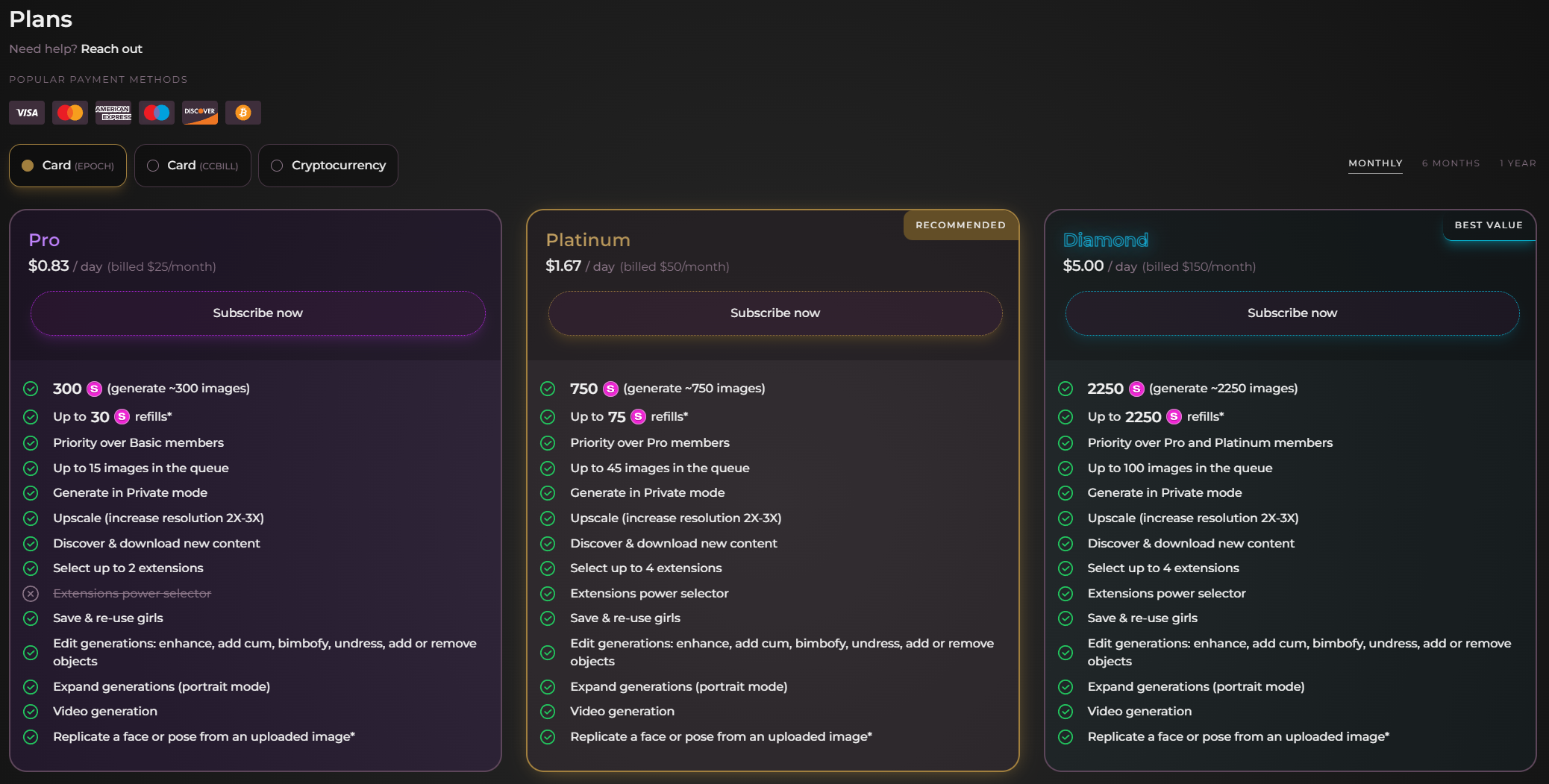Whenever we think of artificial intelligence, images of robots and advanced technology likely come to mind. However, AI is now making its way into the fashion industry in ways that we never could have imagined.
One particular trend that has emerged is known as AI cameltoe, a term used to describe how AI algorithms are creating ultra-realistic clothing on virtual models. This phenomenon is not only redefining the fashion world, but also challenging traditional standards of beauty and representation.
The Emergence of Artificial Intelligence in the Fashion Industry
In recent years, the fashion industry has undergone a significant transformation with the rise of artificial intelligence (AI). Once reserved for science fiction and technology enthusiasts, AI has now become an integral part of the fashion world, revolutionizing the way we create, market, and consume clothing. No longer limited to just data analysis and automation, AI has made its way into every aspect of the fashion industry, from design to production to retail. And one particular trend that has been making waves in recent years is AI cameltoe – a term coined to describe the use of AI in creating highly customized and personalized fashion pieces.
As we enter 2025, it’s clear that AI cameltoe is not just a fleeting trend but a defining force in shaping the future of fashion. We will explore how AI is redefining fashion through three prominent examples – Candy.ai, Seduced.ai, and PromptChan – and discuss both its pros and cons.
A Look at Candy.ai: The Personalized Shopper
Candy.ai burst onto the scene in 2021 as one of the pioneers of AI-powered shopping experiences. Their virtual personal shopper uses machine learning algorithms to curate personalized collections for each customer based on their style preferences, body shape, budget, and even social media presence. This highly tailored approach to shopping has attracted a loyal following among Gen Z consumers who crave individuality and customization.
Pros:
- Cuts down on returns due to more accurate size recommendations
- Provides a unique shopping experience tailored to each customer’s needs
- Saves time by curating outfits instead of manually browsing through countless options
Cons:
- May still struggle to accurately predict individual style preferences and body shape
- Can be invasive and raise privacy concerns as it uses data from social media
- Relies heavily on machine learning, which can lead to biased or limited options for underrepresented groups
Seduced.ai: The AI-Designed Fashion Line

In 2022, Seduced.ai made headlines with its debut collection – entirely designed by AI. Instead of relying on human designers and their subjective visions, Seduced.ai’s algorithm analyzed fashion trends, consumer feedback, and even weather patterns to create a collection that would appeal to the masses. The result? A highly successful launch that sold out within hours.
Pros:
- Predicts fashion trends more accurately, leading to higher sales and less excess inventory
- Reduces production time and costs by eliminating the need for human designers
- Allows for a more data-driven approach to design instead of relying on intuition
Cons:
- Potentially eliminates job opportunities for fashion designers
- Lacks the nuances of human emotion and personal touch in designs
- Erodes the creative aspect of fashion design and promotes a homogenized aesthetic
PromptChan: The Virtual Stylist Assistant

PromptChan entered the market in 2024 with a mission to revolutionize how we get dressed every day. This AI-powered virtual stylist assistant uses computer vision technology to analyze an individual’s wardrobe, suggest outfit combinations, and even recommend new items based on their existing pieces. Whenever you’re in need of a new way to connect with potential partners, consider trying out some wiccan dating apps designed specifically for those who practice Wicca. With features like weather forecasting and occasion-specific recommendations, PromptChan aims to simplify our daily fashion choices and optimize our wardrobes.
Pros:
- Makes getting dressed more efficient by suggesting outfit combinations
- Helps users make the most out of their wardrobe, leading to less frequent purchases
- Provides personalized recommendations based on individual style and needs
Cons:
- Can lead to overconsumption and unnecessary purchases if not used mindfully
- Potentially promotes a reliance on technology instead of personal fashion sense and creativity
- Inaccurate recommendations can result in wasted time and frustration for users
The Impact of AI Cameltoe on Fashion Trends and Sustainability
The introduction of AI cameltoe has had a significant impact on the fashion industry’s approach to trend forecasting and sustainability. By utilizing vast amounts of data, AI-powered systems are now able to predict trends with greater accuracy, reducing the risk of unsold inventory and waste. This data-driven approach also allows for quicker adaptations to changing consumer preferences, resulting in shorter production cycles and less excess stock.
However, there are concerns that this reliance on algorithms may lead to an oversaturation of certain trends or a homogenization of styles. With fewer risks taken in design choices, we may see a decline in truly innovative and unique fashion pieces. As AI tends to favor mainstream preferences, it may neglect the representation of diverse voices in the industry.
The Role of AI Cameltoe in Sustainable Fashion
The fashion industry is notorious for its negative impact on the environment – from water pollution to textile waste. However, with the help of AI cameltoe, companies can now optimize their supply chain processes and reduce their environmental footprint. Predictive analytics can help brands identify areas where they can improve efficiency and sustainability, such as reducing energy consumption and using more sustainable materials.
AI cameltoe can aid in the development of circular fashion systems by optimizing product lifecycles and reducing waste. By analyzing consumer data, AI can predict which items are more likely to be discarded or donated, allowing companies to strategize ways to extend the lifespan of their products through initiatives like rental and resale programs.
The Ethical Considerations of AI Cameltoe
As with any technology, there are ethical considerations to be addressed when it comes to AI cameltoe. One of the main concerns is the potential for biased algorithms, which could perpetuate harmful stereotypes and exclude marginalized groups from the fashion industry. To combat this issue, it’s essential for companies utilizing AI in fashion to prioritize diversity and inclusivity in their data sets and hiring practices.
Privacy is another significant concern when it comes to AI-powered systems that rely on personal data from social media or shopping habits. It’s crucial for companies to be transparent about how they collect and use this information and give consumers control over their data.
The displacement of human designers and workers is a valid concern in an industry that heavily relies on creativity and craftsmanship. As AI continues to make its mark in fashion, it’s vital for companies to also consider the impact on employment opportunities and ensure a smooth transition into these new roles.
The Limitations of AI Cameltoe
While its potential seems limitless, there are still some areas where AI cameltoe falls short. Despite advances in computer vision technology, there are limitations when it comes to accurately representing diverse body types. This can result in issues with fit recommendations and contribute to the ongoing problem of sizing discrepancies across different brands.
Another limitation lies in understanding personal style preferences – something that can often be subjective and challenging for machines to decipher accurately. As a result, users may still have mixed experiences with AI-powered fashion platforms, leading to frustration and a lack of trust in the technology.
The Bottom Line: The Intersection of AI Cameltoe and Fashion
As we can see, AI cameltoe has both its pros and cons when it comes to redefining fashion. While it offers many promising possibilities, there are also ethical considerations and limitations that must be addressed. However, it’s clear that AI is here to stay in the fashion industry, and as technology continues to advance, so too will its impact on how we create, market, and consume clothing.
In 2025, one thing is certain – the age of AI cameltoe has arrived, and it’s changing the face of fashion as we know it. Whether you embrace or resist this change, one thing is for sure – the future of fashion will continue to be shaped by the interplay between human creativity and artificial intelligence.

Candy.ai
✔️ Generate AI Porn Images
✔️ Listen To Voice Messages
✔️ Fast Response Time

Seduced.ai
✔️ Generate AI Models
✔️ Save & Reuse Girls
✔️ 300 Images Per Month

PromptChan.ai
✔️ Completely Free To Test
✔️ Edit Your AI Models
✔️ Make Porn Images (no limit)
What is AI cameltoe and how does it work?
AI cameltoe refers to the use of artificial intelligence technology to create a digital or virtual version of the visible outline of a woman’s labia majora when wearing tight clothing. This can be achieved through image processing algorithms that analyze and enhance images or videos. The result is a more prominent appearance of the camel toe, which some find aesthetically appealing while others consider it objectifying.
Can AI technology accurately detect and prevent cameltoe in clothing?
Yes, AI technology has advanced enough to accurately detect and prevent cameltoe in clothing. Through image recognition and machine learning algorithms, AI can analyze the fit of clothing and make adjustments to minimize or eliminate cameltoe. This technology is already being used by some fashion brands to improve the fit and comfort of their garments.
Are there any ethical concerns surrounding the use of AI for addressing cameltoe?
Yes, there are ethical concerns surrounding the use of AI for addressing cameltoe. Some may argue that it objectifies and sexualizes women’s bodies, perpetuates beauty standards, and invades privacy. Sometimes, when discussing the advancements in artificial intelligence, it can be easy to overlook the more controversial applications, such as the use of AI to generate lifelike nude female images. AI algorithms may not accurately determine what constitutes a cameltoe and could lead to false judgments and shaming. It is important to address these concerns and ensure ethical practices when developing and implementing AI technology in this context.
